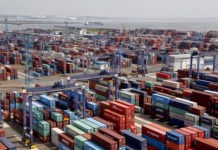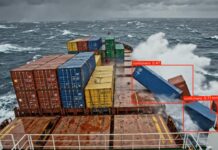
Recent discussions on tariffs have largely overlooked the potential implementation of the Office of the United States Trade Representative (USTR)’s port fees on Chinese-built vessels.
The current US administration is considering an additional port fee for Chinese-built vessels entering US ports to curb China’s dominance in shipbuilding. This fee, which could reach up to US$3.5 million per port call, varies based on the vessel’s origin and the owner’s fleet composition.
Given that typical US port calls cost a maximum of US$80,000, this fee could significantly impact import and export volumes.
According to VesselsValue trade data, there were 3,150 dry bulk port calls in the US in Q1 2025, involving 1,609 dry bulk carriers. Among these, Chinese-built vessels accounted for the largest share at 45%, followed by Japanese-built vessels at 41%, South Korean vessels at 6%, and US vessels at 1%.
Imposing substantial port fees on the Chinese fleet would reduce Chinese vessels trading to and from the United States—straining Japanese and South Korean-built vessels as the US fleet cannot compensate for the shortfall. The combined effect of extra port fees on Chinese vessels and less tonnage willing to call the US would likely increase freight costs.

However, Reuters reported on 9th of April that the Trump administration is reconsidering the proposed fees due to widespread negative feedback from various industries. US Trade Representative Jamieson Greer indicated at a Senate Finance Committee hearing that not all proposed fees will be implemented and may not be cumulative.
There are discussions about a less onerous port fee system to reduce the impact on US businesses, suggesting a more lenient approach than initially proposed. This shift provides some relief to shipowners with Chinese-built vessels.
Nevertheless, on 9 April, Trump signed an executive order to bolster the US shipbuilding industry, pledging significant investment in the sector. The USTR will release its port fee ruling on 17 April, but potential port fees could be implemented as late as November, becoming a critical area to monitor.
Author: Mikkel Nordberg, head of dry bulk analysis for Veson Nautical





